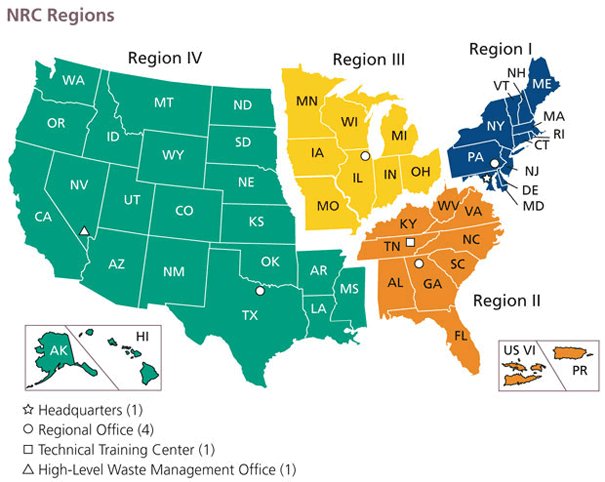Nuclear Energy Activist Toolkit #33
On May 13, 2014, I made a presentation on Fukushima’s regulatory impacts (click here for pdf version or ppt version) at the two-day annual seminar conducted by NRC Region I in King of Prussia, PA. I was the only external stakeholder invited to present during the seminar.
I opened my presentation by remarking that I could confidently state that Region I ranks among the top five performing NRC regional staffs in the entire United States. (There are only four NRC regional offices, a fact underlying my confidence.)
During the question and answer period following my presentation, Bill Dean—the Regional Administrator for NRC Region I—recalled my opening remark and asked what it would take for Region I to earn my top spot. While we had not pre-arranged my set-up and his follow-up question, Bill’s inquiry enabled me to elaborate on my assessment of Region I’s performance.
My Checklist
I told Bill and the several dozen NRC staffers attending the seminar that I considered Region I to be the top performing region. I went on to explain my reasons for placing Region I at the top of my list. The reasons I gave them were extracted from a checklist I developed more than 15 years ago for the monitoring of safety performance at ten U.S. nuclear power plants that UCS documented in a June 1998 report titled “The Good, The Bad & The Ugly.”The checklist consisted of nine questions:
- Who identified the problem?
- How was it identified?
- Was it evaluated properly?
- What caused the problem?
- When was it identified?
- Had the problem occurred before?
- If so, had the problem been fixed?
- If so, was the fix effective?
- Has the problem been corrected?
When a problem is found by an aggressive, pro-active effort in response to another problem or to a problem reported at another facility, that reveals good performance. When a problem is self-revealing (e.g., a leaking pipe finally gets noticed by stepping off stairs into knee-deep water) or repetitive (e.g., a blown fuse gets replaced several times before workers notice an electrical fault is causing the problem), that reveals poor performance.
These questions were developed to evaluate safety performance by plant owners, but the concept also applies to the NRC. Safety is best served when problems are identified as early as possible and properly corrected on the first attempt. Safety levels drop as more and more latent problems remain undetected and band-aid fixes allow problems to recur again and again.
The 17 nuclear plants in NRC Region I (Beaver Valley, Limerick, Peach Bottom, Susquehanna and Three Mile Island in Pennsylvania; Calvert Cliffs in Maryland; Fitzpatrick, Ginna, Indian Point, and Nine Mile Point in New York; Hope Creek, Oyster Creek, and Salem in New Jersey; Millstone in Connecticut; Pilgrim in Massachusetts; Seabrook in New Hampshire; and Vermont Yankee in Vermont) have had problems in the past two years. But those problems do not show a pattern of the NRC missing opportunities to have found them sooner or of the NRC applying ineffective fixes to problems. From my perspective monitoring the NRC and nuclear power plant safety, NRC Region I is performing discernibly better than the other three regions.
I concluded my answer to Bill’s question by observing that I recognized this outcome was not luck but reflected considerable effort by the people in the room and others in Region I.
Bottom Line
Years ago, a panel of judges rated the performance of Olympic figure skaters. The highest and lowest ratings for each skater were tossed out and the remaining ratings averaged to get the final score.
My rating system is nearly the opposite of this approach. I ignore middle performances and focus on the most positive and negative performances. The former clearly illustrates what can be achieved. The latter clearly identifies who most needs to be achieving it.
I did not give NRC Region I my top rating. They earned it.
Bill Dean’s question itself reflects why NRC Region I tops the list. Bill has known me long enough to realize his question could very easily have unleashed a list of criticisms of where his region had dropped the ball. And I’ve known Bill long enough to know that he would have seriously listened to all my criticisms and taken steps to remedy those that he agreed with me. A good safety culture entails turning over rocks looking for problems to fix rather than meekly waiting for them to strike.
This post serves both to recognize the hard work and solid results achieved by NRC Region I and to hopefully encourage the other regions (particularly Region II) to pick up their games and give Region I more competition.
The UCS Nuclear Energy Activist Toolkit (NEAT) is a series of post intended to help citizens understand nuclear technology and the Nuclear Regulatory Commission’s processes for overseeing nuclear plant safety.

